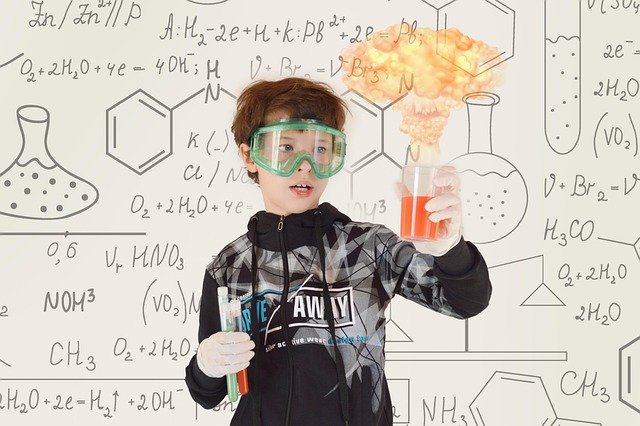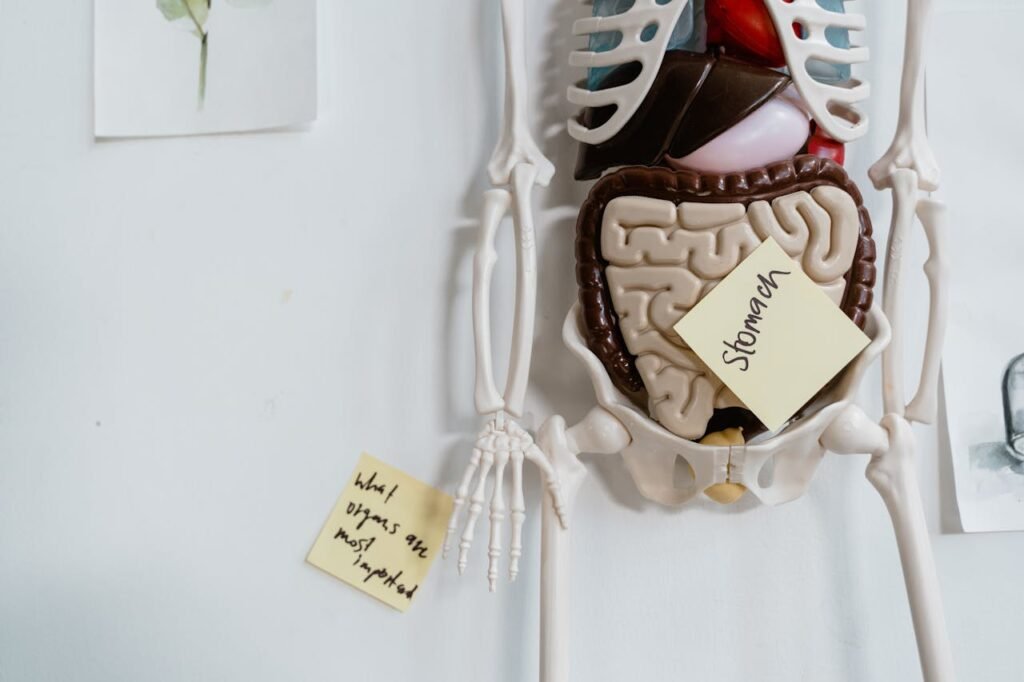Have you ever watched a candle burn, seen a cake rise in the oven, or mixed vinegar with baking soda and watched it fizz? All of these are chemical reactions. They may look like simple changes, but inside, something amazing is happening—substances are being transformed into something new.
Chemical reactions are happening all around us, all the time. They take place in the kitchen, in our bodies, in cars, and even in the sky above us. Without them, life as we know it would not exist. Plants would not make food, our bodies would not get energy, and there would be no clean air to breathe.
But what exactly is a chemical reaction? Why do substances change form, and how does it affect our daily lives? In this article, we will explore the world of chemical reactions step by step. By the end, you’ll see that chemistry is not just something in a textbook—it is the story of how the world works, right down to the tiniest particle.
What Is a Chemical Reaction?
A chemical reaction is when one or more substances change into something completely new. It is not like cutting paper into smaller pieces or melting ice into water, because those are physical changes. The paper is still paper, and melted ice is still water. But in a chemical reaction, the identity of the substance itself changes.
Think of it as cooking. When you mix flour, sugar, eggs, and butter, you do not just get a pile of ingredients—you get a cake. The ingredients combine and change form, creating something entirely new. You cannot separate the cake back into eggs or flour. That’s what makes it a chemical change.
Signs of a Chemical Reaction
Since substances are invisible at the atomic level, how do we know a chemical reaction has happened? Luckily, reactions often give us clues.
Sometimes, we see gas bubbles forming, like when vinegar reacts with baking soda. Other times, there is a color change, like when iron rusts and turns orange-brown. Heat or light might be released, as in fireworks or a burning candle. In some cases, a solid forms out of a liquid mixture—this is called a precipitate.
All these changes are signs that atoms inside the substances are rearranging themselves to create something new.
Atoms and Bonds
To understand why chemical reactions happen, we need to look at atoms, the tiny building blocks of everything. Atoms can connect to each other through links called bonds. Imagine these bonds as little sticks holding Lego blocks together.
In a chemical reaction, old bonds break and new bonds form. This rearrangement of atoms is what creates new substances. For example, when hydrogen gas reacts with oxygen gas, the atoms rearrange to form water. You start with two gases, but after the reaction, you get a liquid that behaves completely differently.
Everyday Examples
Chemical reactions are not just experiments in a lab. They happen in our everyday lives. When you bake bread, yeast produces carbon dioxide gas that makes the dough rise. When you leave an apple slice out, it turns brown because oxygen in the air reacts with the apple’s chemicals. When your body digests food, chemical reactions break it down into energy that powers every move you make.
These reactions may seem ordinary, but they are the secret processes that keep life moving.
Why Chemical Reactions Matter
Without chemical reactions, there would be no cooking, no breathing, no plants, and no energy for life. They are the foundation of how the universe works, from the rust on a bicycle to the stars burning in the sky. By learning how substances change form, we begin to see the hidden patterns that make the world alive and dynamic.
Types of Chemical Reactions

Not all chemical reactions look the same. Some are quick and explosive, while others are slow and almost invisible. Scientists classify reactions into different types to help us understand the patterns of how substances change. Let’s explore the main ones in simple terms.
Combination Reactions
A combination reaction happens when two or more substances come together to form one new substance. Think of it as building something new out of smaller pieces.
One simple example is when hydrogen and oxygen gases react to make water. Another example is when you light a fire and carbon in the wood combines with oxygen in the air to form carbon dioxide. These reactions are like puzzle pieces locking together to form a whole new picture.
Decomposition Reactions
Decomposition is the opposite of combination. Here, one substance breaks down into two or more new substances. Imagine breaking apart a Lego tower into separate bricks.
A good example is the way hydrogen peroxide, a liquid we sometimes use to clean cuts, breaks down into water and oxygen gas when exposed to light. You can even see bubbles forming as oxygen escapes. Another example is food spoiling—chemicals inside slowly break down, producing new substances with very different smells.
Single Replacement Reactions
In single replacement reactions, one element takes the place of another in a compound. Think of it as a game of musical chairs, where one atom pushes another out of its spot.
For instance, if you put a piece of zinc metal into copper sulfate solution, the zinc replaces the copper, and copper metal appears. To students, this might sound complicated, but what it really shows is how reactive some elements are compared to others.
Double Replacement Reactions
Double replacement reactions are like two pairs swapping partners. In these reactions, parts of two compounds switch places, creating two new compounds.
One everyday example is when vinegar (which contains acetic acid) reacts with baking soda (sodium bicarbonate). They swap components, and one result is carbon dioxide gas, which makes the fizzing and bubbling you see. This is why vinegar and baking soda are so popular in school experiments—they show chemical change in a fun and clear way.
Combustion Reactions
Combustion is what happens when something burns. In these reactions, a substance reacts quickly with oxygen, releasing heat and light.
A burning candle is a small example. The wax reacts with oxygen to release energy in the form of flame and light. Fireworks are a more dramatic version, with added chemicals that produce bright colors and loud sounds. On a larger scale, cars use combustion inside engines to turn fuel into the energy that moves the wheels.
Why Classifying Reactions Helps
At first, these names might feel like labels to memorize. But the truth is, they are patterns. Once you learn them, you start to see that all chemical changes, no matter how different they look, follow the same simple rules of atoms rearranging. Recognizing these patterns helps us understand the world and even design new materials and technologies.
Chemical Reactions in Everyday Life
Chemical reactions are not just something that happen in a science lab—they are happening all around you, all the time. In fact, most of the things you do each day involve chemistry in some way. When you eat breakfast, when you play outside, even when you breathe, chemical reactions are taking place quietly and constantly. Let’s look at some of the most familiar ones.
Cooking Food
Cooking food is chemistry. Every time you cook, you are creating chemical reactions. When you bake bread, the yeast produces carbon dioxide gas, which makes the dough rise and turn fluffy. When you fry an egg, the clear liquid egg white changes to solid white because its proteins are reorganizing in a chemical reaction.
Even browning food is chemistry. When toast darkens or meat sizzles on the grill, it is due to a reaction called the Maillard reaction, which gives cooked food its delicious smell and taste. None of these changes can be reversed—the egg cannot turn raw again, and the bread dough cannot go back to flour and water—which is how you know they are chemical, not just physical, changes.
Breathing and Digestion
Your body is a living laboratory. Every time you breathe, you are performing a chemical reaction. Oxygen from the air goes into your lungs and then into your blood, where it reacts with glucose (sugar) from food. The reaction releases energy, which your body uses to move, think, and grow. The waste product of this process is carbon dioxide, which you breathe out.
Digestion is another set of chemical reactions. When you eat, enzymes in your saliva, stomach, and intestines break down food into smaller molecules. Proteins turn into amino acids, starches turn into sugars, and fats turn into fatty acids. Your body then uses these building blocks for energy and growth.
Rusting and Rotting
Sometimes chemical reactions are slow and unwanted, like rusting or rotting. When iron is left outside in the rain, it reacts with oxygen and water, forming rust, a reddish-brown substance. Once iron rusts, it cannot go back to shiny metal without special treatment.
Rotting fruit or vegetables is another example. When apples or bananas turn brown, they are reacting with oxygen in the air. Bacteria and fungi also cause changes, breaking down the food into new substances. These slow reactions remind us that chemistry is not always about fireworks—it can also be about natural processes of change.
Cleaning and Everyday Products
The soap you use to wash your hands, the bleach that disinfects surfaces, even the toothpaste you brush with—all rely on chemical reactions. Soap molecules react with grease and dirt, lifting them away so water can rinse them off. Bleach reacts with stains and germs, breaking them down. Toothpaste contains tiny amounts of chemicals that react with acids in your mouth, protecting your teeth from damage.
Every time you clean, brush, or wash, you are relying on chemistry to do the job.
Light and Fire
Even things as simple as lighting a candle or striking a match are chemical reactions. The match head contains chemicals that react with friction when you strike it, creating enough heat to start a fire. Once burning, the flame is a combustion reaction—fuel reacting with oxygen to produce heat, light, and new gases.
Without these everyday reactions, our lives would be dull and incomplete. Cooking would not taste the same, our bodies would not have energy, and we would not have ways to keep our surroundings clean.
The Science Behind Energy in Chemical Reactions
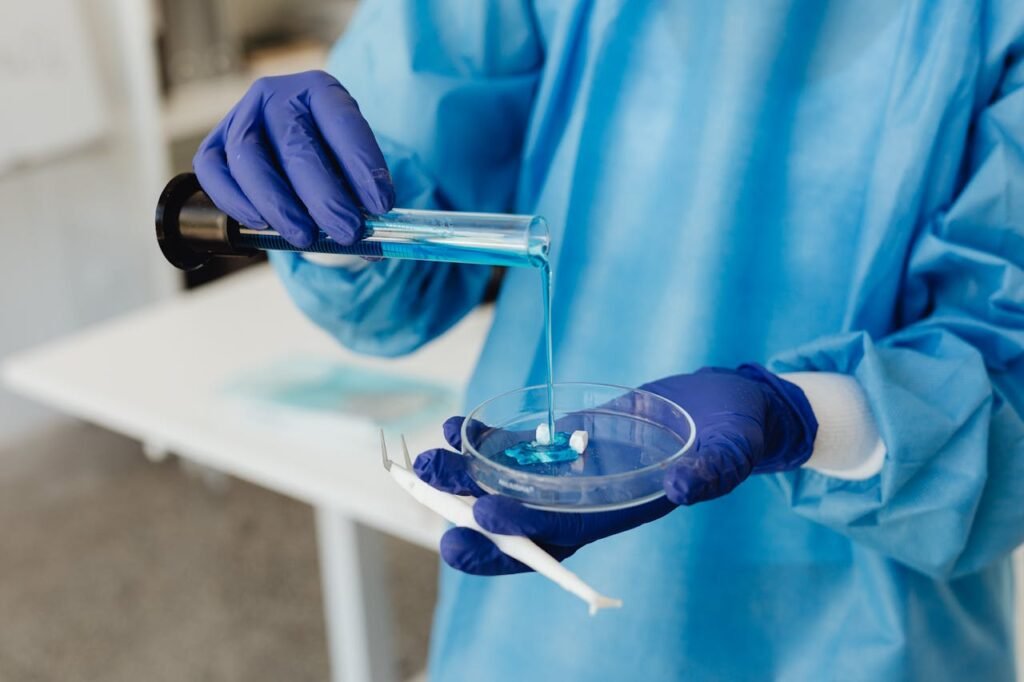
One of the most exciting things about chemical reactions is how they involve energy. Some reactions release energy that we can see or feel, while others need energy to get started. Understanding this is like discovering the “engine” that makes reactions happen.
Energy Released
Some reactions give off energy in the form of heat, light, or sound. These are called exothermic reactions. A burning candle is a perfect example. The wax reacts with oxygen in the air, releasing heat and light that we see as a flame. Fireworks are another, much more dramatic, example. Chemicals inside the firework react and release energy as bright colors and loud booms.
Even the food we eat works this way. When our body breaks down sugar during respiration, it releases energy that powers our muscles and brain. You cannot see flames inside your body, but the process is still giving off energy—just in a controlled way.
Energy Absorbed
Other reactions do the opposite—they take in energy to happen. These are called endothermic reactions. A simple example is the reaction between baking soda and vinegar. The fizzing you see is gas being released, but if you touch the container, it feels cooler than before. That is because the reaction absorbs heat from its surroundings.
Another example is photosynthesis, the process plants use to make food. Plants take in sunlight energy and use it to change carbon dioxide and water into glucose, a sugar that stores energy. Without this type of reaction, life on Earth would not exist.
Activation Energy
Every chemical reaction, whether it gives off energy or absorbs it, needs a small push to get started. This push is called activation energy. Think of it like lighting a match. The chemicals in the match are ready to react, but nothing happens until you strike it. The friction provides enough energy to start the reaction, and then it keeps going on its own.
In everyday life, activation energy is why you need to heat oil in a pan before cooking, or why sparks are needed to start a fire in a campfire or a car engine. The reaction needs that little nudge to begin.
Why Energy Matters
The way reactions use or release energy is what makes them useful. Combustion reactions give us heat to stay warm and energy to drive cars. Endothermic reactions, like photosynthesis, give plants the energy to grow, which feeds all life on Earth. Understanding energy also helps us control reactions, making them safe for cooking, medicine, and industry.
When you think about it, energy is the heartbeat of chemistry. Without it, atoms would not move, bonds would not break or form, and nothing new could ever be created.
How Chemical Reactions Shape the Natural World
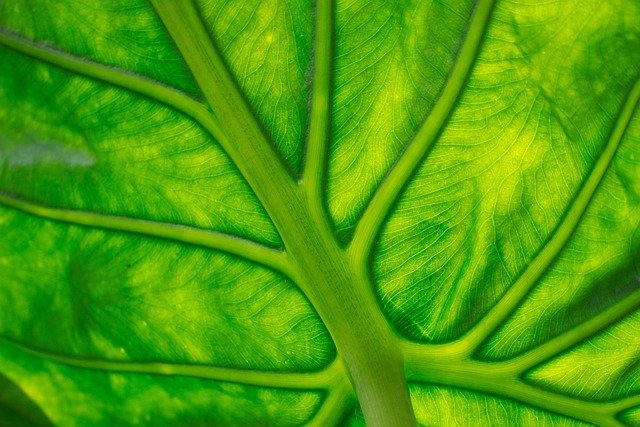
Chemical reactions are not limited to test tubes and laboratories. They are the hidden processes that keep nature alive and balanced. Every living thing, from the smallest plant to the largest whale, depends on chemical changes happening quietly, every second of the day.
In Plants
One of the most important reactions on Earth is photosynthesis. Plants take in carbon dioxide from the air and water from the soil. With the help of sunlight, they turn these simple ingredients into glucose (a type of sugar) and oxygen. The glucose becomes food for the plant, and the oxygen is released into the air for us to breathe.
Without photosynthesis, there would be no food chains, no oxygen to breathe, and no life as we know it. It is a chemical reaction that makes Earth a living planet.
In Animals and Humans
Our bodies are full of chemical reactions that never stop. The most important one is cellular respiration. This is when the glucose from food reacts with oxygen in our cells to release energy. This energy powers everything we do—walking, thinking, running, and even sleeping.
Other reactions keep us alive too. When you get a cut, your body starts a reaction that forms a clot to stop the bleeding. When you eat food, enzymes in your stomach and intestines break it down through reactions into nutrients your body can use. Every heartbeat, every breath, every movement is powered by chemistry.
In the Environment
Chemical reactions are also at work in the air, water, and soil. For example, the water cycle involves evaporation and condensation, which are physical changes, but also reactions in the atmosphere that produce clouds and even acid rain. In oceans, carbon dioxide dissolves and reacts with water, forming weak acids that affect marine life.
The breakdown of rocks into soil, the rusting of iron in nature, and the way volcanoes release gases are all part of the Earth’s chemistry. Even weather is influenced by reactions in the atmosphere. For example, ozone in the upper atmosphere forms and breaks down in reactions that protect us from harmful rays of the sun.
Balance in Nature
Nature works because chemical reactions stay in balance. Plants produce oxygen, which animals and humans use for respiration. We breathe out carbon dioxide, which plants use to make food. This perfect cycle is chemistry in action.
But when humans disturb the balance—by burning too many fuels, cutting down forests, or polluting the air—the reactions change. Too much carbon dioxide leads to global warming. Chemicals in factories can break down the ozone layer. Understanding these reactions is key to protecting the planet.
Why It Matters
Chemical reactions are the foundation of the natural world. They feed us, give us air to breathe, power our bodies, and shape our environment. Learning how they work helps us respect nature more deeply and reminds us that every small change in chemistry can have big effects on life.
Fun and Safe Experiments Kids Can Try at Home
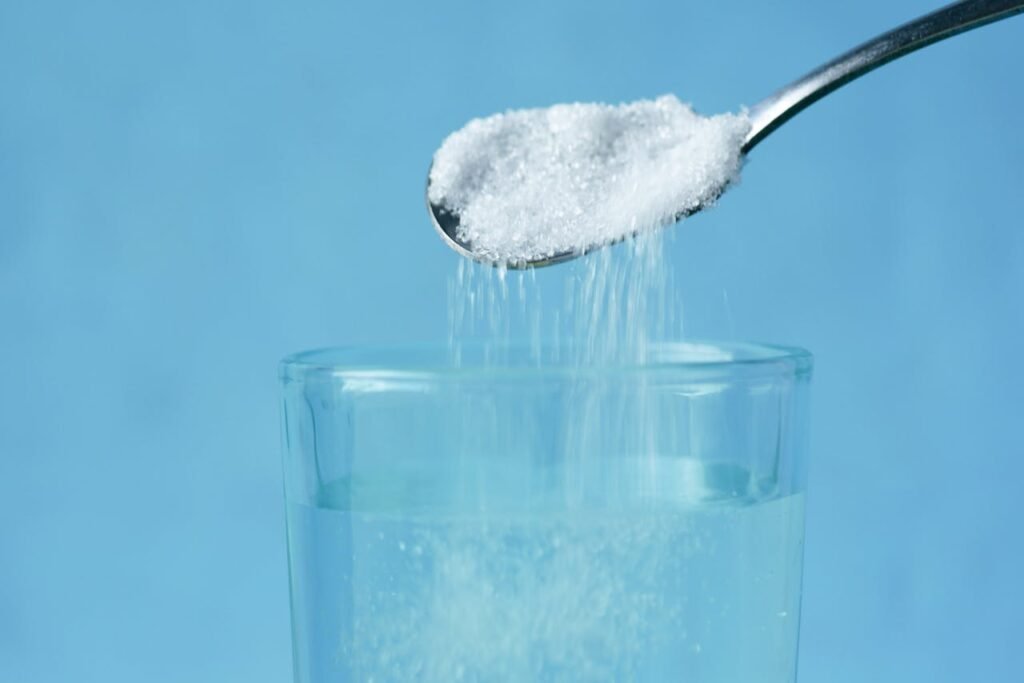
The best way to understand chemical reactions is to see them in action. You don’t need a laboratory filled with test tubes and fancy equipment. Many experiments can be done safely at home using simple items you already have. Each experiment shows how substances change form and helps kids connect what they learn with what they see.
The Baking Soda and Vinegar Volcano
This is one of the most famous experiments for a reason—it’s dramatic, easy, and fun. When you mix baking soda with vinegar, they react to produce carbon dioxide gas. The gas escapes quickly, creating fizzing and bubbling that can be shaped into a “volcano” if you build one from clay or paper.
What’s happening? Baking soda is a base, and vinegar is an acid. When they combine, their molecules rearrange, producing a gas, water, and a salt. It’s a perfect example of how two simple ingredients can create something completely new.
Lemon Juice Invisible Ink
This experiment shows that not all reactions are about fizzing or bubbling—some are about slow changes that reveal themselves later. Write a message on paper using lemon juice and a cotton swab. Once it dries, the writing disappears. But if you hold the paper near a warm light bulb or iron, the writing reappears in brown.
The heat causes the lemon juice to oxidize (react with oxygen in the air), turning it brown while the plain paper stays the same. Suddenly, chemistry becomes secret writing.
Rusting Nails
If you leave an iron nail in water for a few days, you’ll notice it changes color and becomes coated with reddish-brown rust. This happens because iron reacts slowly with oxygen and water to form iron oxide. It’s a clear example of a chemical reaction happening over time.
To explore further, kids can compare nails left in plain water, salty water, or dry air and see how the environment affects the reaction.
The Color-Changing Cabbage Juice
Red cabbage can be turned into a natural chemistry tool. When boiled in water, the cabbage releases pigments that change color depending on whether they are in an acidic or basic solution.
Dip strips of paper or pour some juice into different household liquids like lemon juice, baking soda water, or soap. You’ll see the color shift from red to purple to green, showing how different substances react differently. This is a fun way to introduce acids and bases.
Yeast and Sugar Experiment
Mix warm water, sugar, and yeast in a bottle, then attach a balloon over the opening. After a short time, the balloon starts to inflate. Why? The yeast feeds on the sugar and produces carbon dioxide gas as part of a chemical reaction. This is the same process that makes bread rise in the oven.
It’s a living example of chemistry in action, powered by tiny organisms.
Why Experiments Matter
These small experiments do more than entertain. They help kids see that chemical reactions are real, observable, and part of daily life. When a child watches bubbles form, colors change, or gases inflate a balloon, the idea of “substances changing form” becomes more than words on a page—it becomes an experience.
How Debsie Helps Kids Explore Chemical Reactions
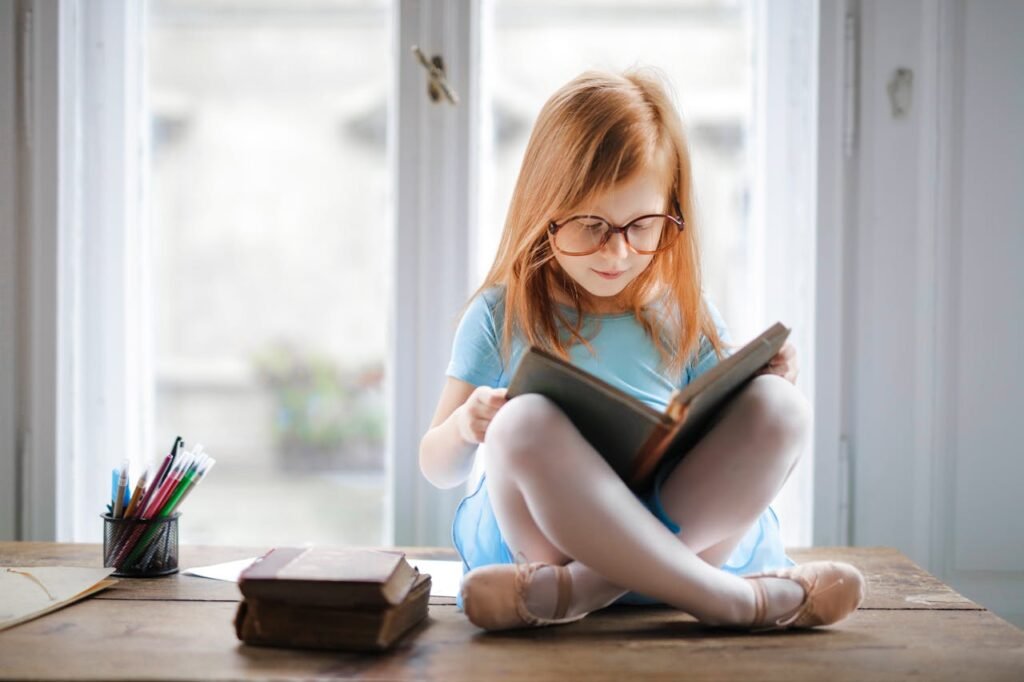
At Debsie, we believe that learning science should feel like an adventure, not just a chapter in a book. Chemical reactions may sound complicated at first, but with the right guidance, children quickly see that it’s just about substances changing form—and it’s happening all around them. Our role is to make that discovery joyful, memorable, and deeply meaningful.
Turning Chemistry Into Stories
Instead of teaching chemical reactions as dry formulas, Debsie teachers use stories to explain what’s happening. For example, instead of saying, “Hydrogen reacts with oxygen to form water,” we tell the story of hydrogen atoms as “lonely characters” who team up with oxygen to create something new. Suddenly, atoms and molecules become characters in a play, and reactions turn into exciting adventures.
Hands-On, Fun Learning
Kids learn best when they can see and do things for themselves. That’s why Debsie lessons often include simple, safe demonstrations that children can try at home. Whether it’s a fizzing vinegar-and-baking-soda volcano, color-changing cabbage juice, or even making homemade slime, these experiments turn abstract science into real, hands-on discovery. Children remember what they experience, not just what they are told.
Gamified Challenges
Learning at Debsie feels like play. Our courses are filled with fun challenges where kids earn points, unlock levels, and solve puzzles by applying what they’ve learned. A child might face a “reaction mystery” where they have to figure out why a nail rusted or why bread rose in the oven. This gamified approach makes even complex topics easy and enjoyable.
Guided by Expert Teachers
Debsie’s partner teachers are not only subject experts in chemistry and science, but also skilled at teaching in simple, child-friendly ways. They avoid heavy words and instead explain concepts using everyday examples children already know—like food cooking, colors changing, or even how our own bodies work. Kids don’t just memorize; they truly understand.
Building Curiosity and Confidence
At Debsie, we see science as more than just facts—it’s a way to spark curiosity and confidence. When children understand chemical reactions, they realize they are surrounded by science every day. This builds critical thinking, problem-solving skills, and a deeper respect for the world around them. Most importantly, they stop fearing science and start loving it.
Debsie doesn’t just teach kids what chemical reactions are—we help them feel the wonder of chemistry. That joy of discovery often becomes the spark that inspires children to explore more deeply, dream bigger, and believe they can achieve great things in science and beyond.
Conclusion: The Magic of Change All Around Us
Chemical reactions are not just about beakers in a laboratory. They are the invisible magic that makes bread rise, keeps our bodies alive, powers our cars, and even lights up the stars. Every time atoms rearrange to form something new, we are witnessing the most important story of nature—how substances change form to keep the world moving forward.
By noticing reactions in everyday life—whether it’s a nail rusting, a cake baking, or soap washing away dirt—children begin to see that science is not far away. It is here, in their homes, their kitchens, their schools, and even in their own bodies. Understanding chemical reactions is not only about learning science—it’s about understanding life itself.
At Debsie, we turn this understanding into an adventure. Our teachers bring chemistry to life with stories, experiments, and playful challenges that make every lesson memorable. We help kids see that science is not something to fear but something to explore with joy and curiosity. By learning how substances change, children also learn how to think critically, solve problems, and see the world with fresh eyes.
👉 Book a free trial class today
👉 Explore Debsie’s courses and spark your child’s love for science, curiosity, and discovery.
Read Next:
